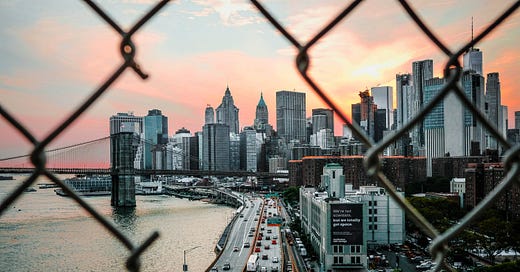Reimagining Urban Cities
Most cities are built based on outdated designs, it's time we seriously consider some updates
Hiya!
In case you haven’t seen the news, global warming is raging. It seems we barely make it a week without a new climate disaster happening. Seeing so many images of destruction only heightens my anxieties about what’s to come. It also makes me ask a question I may not want the answer to — is my city prepared?
I think it’s safe to say, humanity is wholly unprepared for what nature is throwing our way. Climate change is a large and complicated issue with dozens of moving parts that will require everyone’s participation. One of which is urban design. Thankfully, scientists, researchers, designers, and architects are working on solutions. Let’s take a look at some.
Current Urban Design
Since the invention of cars, urban design has focused on accommodating them. Additionally, urban populations continue to sky-rocket as more people move to cities from less populated areas.
According to a climate report by the United Nations, about 56 percent of our global population lives in cities— by 2050, it’s expected to rise to two-thirds. Yet, already, urban areas contribute nearly 75 percent of global CO2 emissions — primarily thanks to heating and cooling systems, lights, cars, and building construction.
Urban emission rates are already much too high. But, considering that by 2050, hundreds of millions of people are predicted to migrate due to global warming, the rate will soon become whatever is worse than catastrophic. Regardless, our cities will have to adapt to accommodate growing populations. So why not try and make them more sustainable in the process?
Sadie Morgan, an architect, and chair of the Quality of Life Foundation told Reuters,
"It's about reminding ourselves that we all have a shared responsibility to ensure that we use less resources. We just have to be open to new ways of living. When designing new structures, for instance, architects should think about how the buildings can be deconstructed and recycled at the end of their life cycle, or transformed for other purposes.”
If we’re going to accomplish such a daunting task as sustainable urban designs against global warming, we need to analyze and break down the problems. While also opening our minds to change and new perspectives. This is the fun part if you ask me because we get to be creative.
Keep reading with a 7-day free trial
Subscribe to Curious Adventure to keep reading this post and get 7 days of free access to the full post archives.



